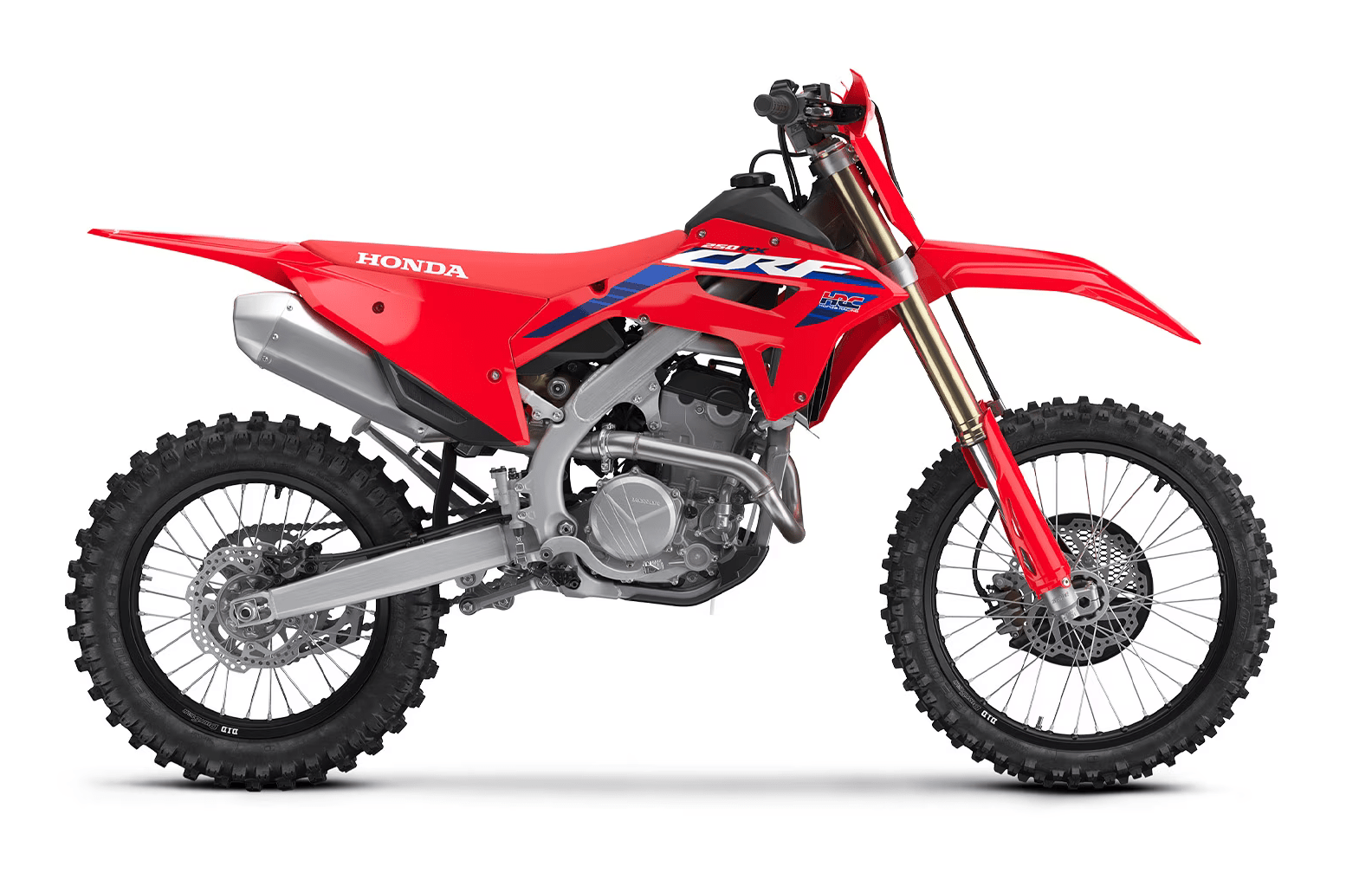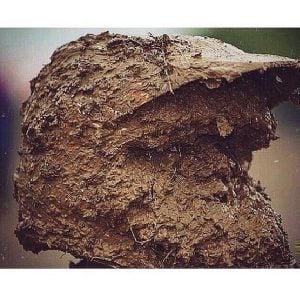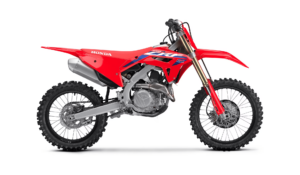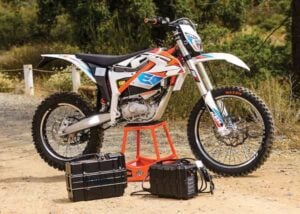We are reader-supported. When you buy through links on our site, we may earn an affiliate commission. Learn More…
The Best Dirt Bike for Trail Riding in 2023 – A Comprehensive Guide
-
Best 4 Stroke Trail Dirt Bike
 Honda CRF450RX
Honda CRF450RXBest 2 Stroke Trail Dirt Bike
 KTM 300 Erzbergrodeo LTD Edition
KTM 300 Erzbergrodeo LTD EditionTrail riding is an exhilarating off-road activity that can take you through a variety of terrains and challenges. But with so many dirt bikes on the market, how do you choose the perfect one for your trail adventures? In this comprehensive guide, we’ll explore the unique aspects of trail riding, the key features of a great trail dirt bike, and the top models for different skill levels. Get ready to discover the best dirt bike for trail riding and hit the trails with confidence!
Key Takeaways
- Get the perfect trail dirt bike for your next adventure with features like 18-inch rear wheel, armor and smoother engine.
- Consider factors such as power delivery, fuel efficiency & range to find the right fit for you.
- Get all the necessary riding gear and accessories to make your experience safe & comfortable.
Understanding Trail Riding: What Sets It Apart

Off road riding, also known as trail riding, is an exciting activity that requires a versatile dirt bike designed for various terrains and obstacles, setting it apart from motocross and other off-road disciplines. A bike for trail riding is perfect for adventures through:
- dense woods
- climbing mountains
- traversing desert-like landscapes
- state trails
On a trail motorcycle specifically built for these conditions, you’ll feel the thrill of riding on a motocross track with other trail motorcycles. Sounds like an adrenaline-pumping adventure, right?
Selecting the best trail dirt bike requires considering factors like engine type, power delivery, and suspension needs for slower, technical, and hard enduro-style terrains. A trail bike typically has an 18-inch rear wheel, a larger gas tank, armor, a different transmission with wider ratios, a quieter exhaust with a spark arrestor, a kickstand, and sometimes even head and tail lights. It usually has a softer suspension and a smooth engine, making it easy to ride and perfect for tackling technical trail riding.
In contrast, a motocross bike is built for track riding, with stiffer suspension and a more aggressive power delivery. Trail bikes are designed for off-road adventures, conquering tight corners, and tackling obstacles with ease. So, if you’re looking for the ultimate off-road experience, a trail dirt bike is the way to go!
Key Features of a Great Trail Dirt Bike

A good trail dirt bike should strike a balance between suspension, handling, engine performance, and fuel efficiency to provide a comfortable and enjoyable ride.
We’ll examine the critical features that make a trail dirt bike great, including its suspension and handling, engine performance and power delivery, and fuel efficiency and range.
Suspension and Handling
Trail dirt bikes should have a softer suspension and be easy to handle, allowing riders to navigate through various terrains with ease. A softer suspension is crucial for comfort during long rides, as riders spend a significant amount of time in the saddle. A stiff suspension, like those found in motocross bikes, would become uncomfortable after extended periods on the trail.
Different trail dirt bike models offer various suspension systems to cater to riders’ preferences and needs. Some examples include:
- The Kawasaki KLX300R, which has adjustable suspenders with good bottoming resistance
- The Sherco SE Factory 2023, which features KYB suspension components
- The KTM 250 XCF, which is more focused on comfort than performance
Choosing a bike whose suspension and handling align with your riding style and the terrains you aim to tackle is pivotal.
Ultimately, the right suspension and handling setup will make your trail riding experience more enjoyable and comfortable, allowing you to tackle challenging terrains and obstacles with confidence. So, take the time to research and test ride different models to find the perfect trail dirt bike that meets your suspension and handling requirements.
Engine Performance and Power Delivery
A great trail dirt bike should have:
- Smooth and predictable power delivery
- Low-end torque for better control on technical trails
- Precise control over the power for navigating tight single tracks and wooded sections of the trail
Two-stroke engines are an excellent choice for trail riding, as they are lighter and simpler to maneuver through tight spaces. Four-stroke engines are more suitable for trails that feature sand, mud and wider two tracks. They also work well in faster riding conditions. Your riding style and the terrains you plan to explore should inform your decision on engine performance and power delivery, ensuring the bike aligns with your needs.
Some trail dirt bike models, such as the Kawasaki KLX230R, have smooth power delivery with just the right amount of torque. Other models, like the KTM 250 XCF, offer power delivery that is smooth from bottom to top, with plenty of low-end, a strong mid-range, and ample top-end and over-rev. Keep these factors in mind when selecting your trail dirt bike to ensure a satisfying and enjoyable riding experience.
Fuel Efficiency and Range
One of the key aspects of a great trail dirt bike is its fuel efficiency and range. Trail dirt bikes should have larger fuel tanks and better fuel efficiency to ensure longer rides without frequent refueling. This is particularly important for those who enjoy exploring remote trails and spending long hours on their bike.
Different trail dirt bike models offer varying fuel capacities and efficiencies. For example, the Kawasaki KLX230R has a 1.8 L gallon fuel tank. Your choice of trail dirt bike should take into account the nature of the trails you’ll ride and the distances you intend to cover. Opting for a bike with a large fuel tank and good fuel efficiency will allow you to enjoy longer rides and explore more challenging trails without the constant worry of running out of fuel.
In addition to fuel efficiency and range, it’s crucial to take into consideration other factors such as engine performance, suspension, and handling when selecting the perfect trail dirt bike. By prioritizing these features, you can ensure a comfortable and enjoyable trail riding experience that will keep you coming back for more.
Top Trail Dirt Bikes for Different Skill Levels

Whether you’re a beginner, intermediate, or advanced rider, there’s a trail dirt bike out there that’s perfect for you. We’ll highlight some of the top models for different skill levels, such as the Yamaha WR250F, KTM 300 XC-W, and Honda CRF450X.
Let’s dive in and find the best dirt bike for your dream trail dirt bike experience!
Best Beginner Trail Dirt Bikes
Beginner-friendly trail dirt bikes should have predictable power, easy handling, and a lower seat height for increased confidence and control. These features allow new riders to learn the basics of trail riding without being overwhelmed by a bike that’s too powerful or difficult to manage.
Some of the best beginner trail dirt bikes include:
- Honda CRF250F: a great option for those just starting out on the trails, as it is light and has a nice power delivery.
- Kawasaki KLX230R: perfect for newbies, thanks to its smooth power and easy handling.
- Yamaha TTR230: features a powerful 223cc, 4-stroke air-cooled engine with 2 valves, delivering 14 pounds of torque from low to high rpm.
Selecting your first trail dirt bike necessitates careful consideration of factors such as size, power delivery, and handling for a comfortable and enjoyable learning experience. Once you’ve mastered your beginner dirt bike, you can look for a more serious enduro trail bike to take your skills to the next level.
Best Intermediate Trail Dirt Bikes
Intermediate trail dirt bikes should offer a balance of power, handling, and suspension to accommodate a wider range of riding styles and terrains. These bikes are designed for riders who have some experience on the trails but are looking to improve their skills and tackle more challenging terrains.
Some of the best intermediate trail dirt bikes include:
- CRF250RX: Built for enduro riders who want a race bike that can still handle tricky trails in the woods.
- YZ250FX: Provides a balance of power and handling, making it an excellent choice for intermediate riders looking to tackle technical trails.
- 250 XC-F: Offers smooth power delivery and a solid suspension system, ensuring a comfortable and enjoyable ride for intermediate riders.
- KX250X: Also offers smooth power delivery and a solid suspension system, ensuring a comfortable and enjoyable ride for intermediate riders.
Consider factors like engine performance, suspension, and handling when selecting an intermediate trail dirt bike, ensuring it aligns with your riding style and the terrains you plan to explore.
Best Advanced Trail Dirt Bikes
Advanced trail dirt bikes should have high-performance engines, advanced suspension systems, and lightweight components for tackling challenging trails and obstacles. These bikes are designed for experienced riders who are looking to push their limits and conquer the toughest trails.
Some of the best advanced trail dirt bikes, also known as the best trail bike options for experienced riders, include:
- KTM 300 XC-W: a lightweight and powerful bike with an “almost ready” to race setup, making it perfect for advanced riders looking to tackle the most challenging trails.
- Honda CRF250X: offers a smooth power delivery and top-notch suspension system.
- Kawasaki KLX230R: super durable and reliable, although it may not have the same level of suspension and overall performance as the other models mentioned.
When opting for an advanced trail dirt bike, give priority to high-performance engines, advanced suspension systems, and lightweight components for an optimal experience on challenging trails.
Electric vs. Gas-Powered Trail Dirt Bikes

When it comes to choosing a trail dirt bike, you have the option of electric or gas-powered models. Each type has its own set of pros and cons, and the right choice for you will depend on your riding style, preferences, and the type of trails you plan to explore.
Electric trail dirt bikes are known for their instant torque and rapid acceleration, making them a popular choice for riders who value quick and nimble handling. They are also quieter and produce zero emissions, making them more eco-friendly than their gas-powered counterparts. However, electric dirt bikes typically have a shorter range and battery life, and they can be more expensive than gas-powered models.
Gas-powered trail dirt bikes, on the other hand, usually have a higher top speed and longer range, making them great for racing and high-speed riding. They are also generally less expensive than electric dirt bikes. However, gas-powered bikes can be noisier and produce emissions, and they require more regular maintenance compared to electric bikes.
Ultimately, the choice between electric and gas-powered trail dirt bikes comes down to personal preference and the type of riding you plan to do. Consider factors such as:
- Weight
- Range
- Environmental impact
- Maintenance requirements
when making your decision.
Tips for Choosing the Right Trail Dirt Bike

In choosing the perfect trail dirt bike, factors such as your skill level, riding style, size, and budget should be considered. Here are some guidelines based on different rider levels:
- Beginner: Look for a bike with predictable power, easy handling, and a lower seat height for increased confidence and control.
- Intermediate: Look for a bike that offers a balance of power, handling, and suspension.
- Advanced: Look for high-performance engines, advanced suspension systems, and lightweight components.
Size is another crucial factor to consider when choosing the right trail dirt bike. It’s important for beginners to choose a bike that allows them to touch the ground with at least one foot for increased confidence and to avoid embarrassing tip-overs. There are mid-size and smaller full-size dirt bikes available for shorter riders, so be sure to explore your options and find the right fit for you. If you find that a 4-stroke dirt bike is too tall for you, there are ways to lower the seat height to make it more manageable.
Lastly, consider your budget when choosing a trail dirt bike. There are plenty of options available at various price points, so be sure to research and compare different models within your budget range. By taking the time to consider these factors, you’ll be well-equipped to choose the perfect trail dirt bike for your needs and preferences.
Maintenance and Upkeep for Trail Dirt Bikes

Maintaining and taking care of your trail dirt bike is vital to ensure its reliability, performance, and lifespan. Regular cleaning and lubrication are crucial for keeping everything running smoothly and preventing corrosion and wear. Be sure to check for any worn or broken parts, such as brakes, suspension, tires, and chains, and get them fixed or replaced as needed.
In addition to regular maintenance, it’s essential to store your trail dirt bike properly when not in use. Keep it in a cool, dry place and cover it to keep dust and dirt out. By taking good care of your trail dirt bike, you’ll ensure that it remains reliable and performs at its best for years to come.
Riding Gear and Accessories for Trail Riding

Hitting the trails requires wearing appropriate riding gear and having necessary accessories for safety and comfort. Some essential items include:
- Helmets
- Boots
- Gloves
- Protective equipment such as chest protectors and elbow guards
Wearing appropriate gear and using the right accessories can help you ride better and stay safe on the trails.
When selecting your trail riding gear and accessories, consider factors such as the type of terrain you’ll be riding on, the weather conditions, and your comfort level. Make sure that your gear fits well and meets safety standards to ensure that you’re adequately protected during your rides.
By investing in the right gear and accessories, you’ll be well-prepared for a safe and enjoyable trail riding experience. So gear up, hop on your trail dirt bike, and explore the great outdoors with confidence and style!
Summary
In this comprehensive guide, we’ve explored the world of trail dirt bikes, from understanding the unique aspects of trail riding to selecting the perfect bike for your skill level and preferences. Whether you’re a beginner, intermediate, or advanced rider, there’s a trail dirt bike out there just waiting for you to conquer the trails. So, gear up, choose the right bike, and embark on your off-road adventures with confidence and excitement. Happy trail riding!
Frequently Asked Questions
Is a 2 stroke or 4 stroke dirt bike better for trail riding?
For trail riding, 2-stroke dirt bikes offer great torque, are lighter and easier to handle, making them ideal for beginners. Their easy maintenance and lower costs make them more attractive than 4-strokes. However, 4-strokes deliver a smoother power delivery and work better on wide open trails.
Is a 450 good for trail riding?
A 450 may be suitable for wide open trail riding, but it is not the ideal bike for tight and technical single track. For this type of trail, a 250 or 350 is a much better choice.
What is a good motorcycle for trail riding?
Kawasaki KLX 110R, Yamaha TT-R110E, Honda CRF125F, Suzuki DR-Z125L, Beta 125 RR 2T, Kawasaki KLX 140R, Yamaha TT-R230 and KTM Freeride E-XC are great motorcycles for trail riding.
What sets trail riding apart from other off-road activities?
Trail riding stands apart from other off-road activities as it requires a versatile dirt bike designed for different terrains and obstacles, making it unique.
What are the key features of a great trail dirt bike?
A great trail dirt bike should offer a balance of suspension, handling, engine performance and fuel efficiency for a smooth and enjoyable ride.







I blog quite often and I seriously appreciate your information. The article has truly peaked my interest.
I’m going to take a note of your site and keep checking for new information about
once a week. I subscribed to your RSS feed too.
aid for ukraine
Careful with the weight: wet versus dry, not the same at all. The Europeans “cheat” by posting only the dry weight, whereas the Japanese post it wet. For perspective, an 8.5 l tank full of gasoline (i.e, wet) adds around 20 pounds to the dry weight. Oops. No matter how you slice it, a full size bike with a tank full of gasoline weighs about 150 pounds, give or take a few which doesn’t show at all in the trails.
8.5liters of gasoline weights under 7 lbs.